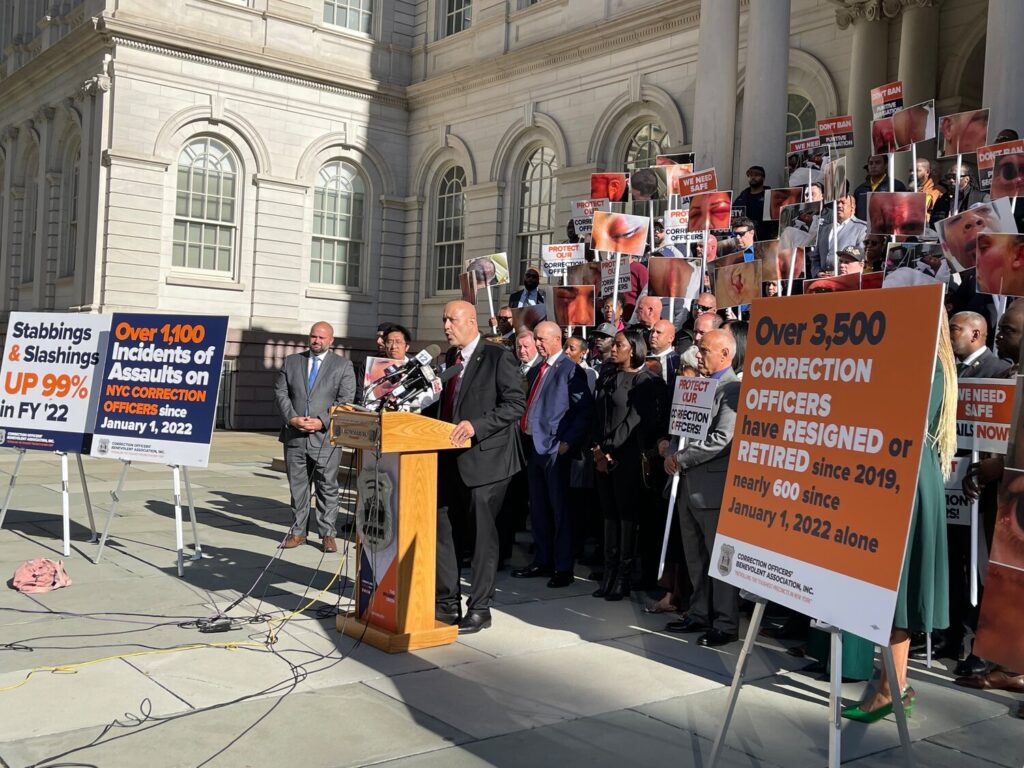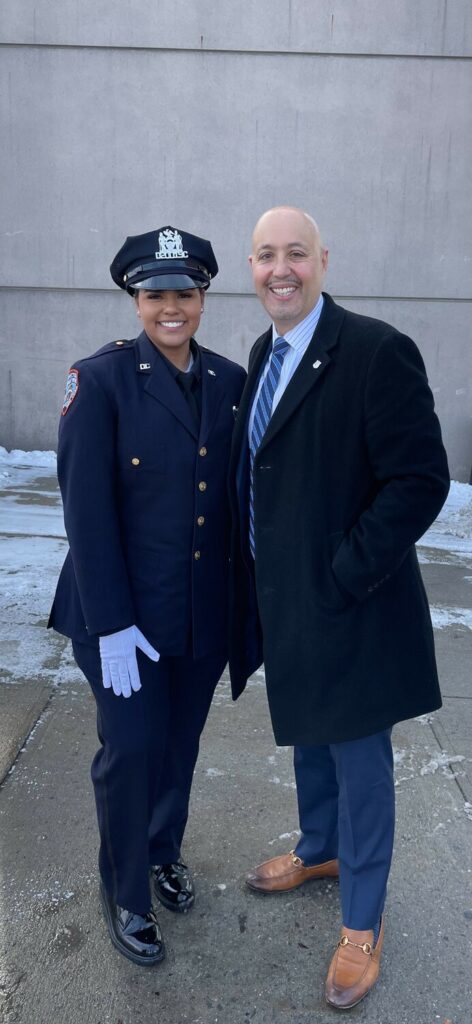
Benny Boscio Jr., the resolute head of the Correction Officers’ Benevolent Association, will continue as union president, having defeated two upstart challengers for the post.
In a referendum on the 25-year correction officer’s tenure, Boscio, who helmed the union through the Covid minefield that battered his union and the Department of Correction, received 48 percent of the 2,333 votes cast by COBA members, with fellow COs William Rodriguez and Ronnie Richardson polling 28 percent and 24 percent, respectively.
While Boscio’s victory last month was not as decisive as that of four years ago, when he took 56 percent of the vote in a three-way contest that included the incumbent, Elias Husamudeen, he remains convinced he is the person to best advocate for COBA’s roughly 5,700 members and of his profession.
“There was nobody better qualified, and the work is still not completed,” he said in a phone interview last week. “We still have a lot of work to do for us as correction officers to get the recognition that we rightfully deserve.”
Some of that work will involve conferring with officials and lawmakers in Albany regarding retirement benefits. Boscio will also keep arguing against the appointment of a federal receiver to address poor conditions on Rikers Island, insisting that the people who now oversee the penal island are best placed to correct conditions there. “It’s just unrealistic,” he said of efforts to put in place what he calls a “quick fix” without any determinable outcome.
He will also speak with legislators about toughening up laws that work to protect correction officers against sexual assaults and other violence by people in custody. “Our priority is to make jails safer for our members,” he said.
But Boscio also says it’s imperative that the city and the DOC replenish a correction officer corps — his union’s membership rolls — downsized by first a hiring freeze and then, as Covid coursed through the jails, massive quits, retirements and, later, firings. Looming retirements of hundreds of COs in the coming years will further shrink the rank.
Between 2020, when the uniformed headcount numbered on average more than 9,000, and 2022, a total of nearly 2,700 officers of all ranks voluntarily left the agency through retirements or departures. Another 334 were either dismissed or fired, and 30 died. The department counted 6,126 officers in April. The DOC did not provide updated figures.
(A report from State Comptroller Thomas DiNapolireleased in November 2022 concluded that the DOC had the highest staffing decrease among all city agencies over the course of the pandemic, with attrition among the uniformed ranks reaching nearly 26 percent.)
The DOC has hired about 660 COs since the start of Fiscal Year 2022, when the hiring freeze was lifted, according to data from City Comptroller Brad Lander’s office, which maintains a DOC “dashboard.”
Although the jail population dropped to an average daily count of under 4,000 in the summer of 2020 from more than twice that just four years earlier, according to the DOC, it has since rebounded, to some 6,300 in May. And February marked the first time since 2016 that people in custody — 6,214 — exceeded the number of total uniformed personnel — 6,151.
Will the contract attract?
And although Boscio believes the terms of a newly ratified collective-bargaining agreement could help attract more officers, it will have to do so in bunches to meet the torrent of retirements expected through 2026, as officers hired in large classes two decades earlier accumulate their 20-year retirement threshold.
“We negotiated the best contract in over 15 years,” the union leader said last week. The five-year deal, retroactive to 2022 and expiring in April 2027, with its nearly 19-percent compounded raise, is largely similar to that of the vast majority of uniformed unions. Unit bargaining, though, brought, among other things, negotiated pensionable retention bonuses for long-serving COs, with 20-year officers due $10,000, 15- through 19-year incumbents due $7,500 and 9.5-year through 14-year COs due $5,000.

According to the new deal, officers’ pay has increased about 10 percent across the board compared to 2022, the last year of the last contract. For instance, starting officer pay is now $57,449, up from $52,170.
Pay for officers with more than five-and-a-half years on the job climbed to $115,580 from $105,284, while pay for an officer with more than 20 years experience rose to $120,201 from $109,667. It will go to $140,070 in the last year of the deal.
Those figures include uniform allowances, night shift differentials, holiday pay, longevity increases and retention bonuses. The new deal also includes modest increases in longevity.
Correction officers overwhelmingly approved the deal, with 1,986 voting in favor and 246 opposed. Boscio, who earns $213,490 for his union role, according to the most recent tax documents available, and whose DOC salary topped $116,000 last year, said he was “really proud” of the deal. “I think that’s something that can be promoted,” he added.
He said the contract, as well as improved conditions inside the jails, could work to convince current COs that joining with “New York’s Boldest” is a quality career move. “I think part of it was we used to be the best promoters of our own job and things got so bad during the de Blasio administration that, you know, we stopped promoting our own jobs,” he said. “So I think we have to work collectively with the city to kind of get us back to where we need to be.”